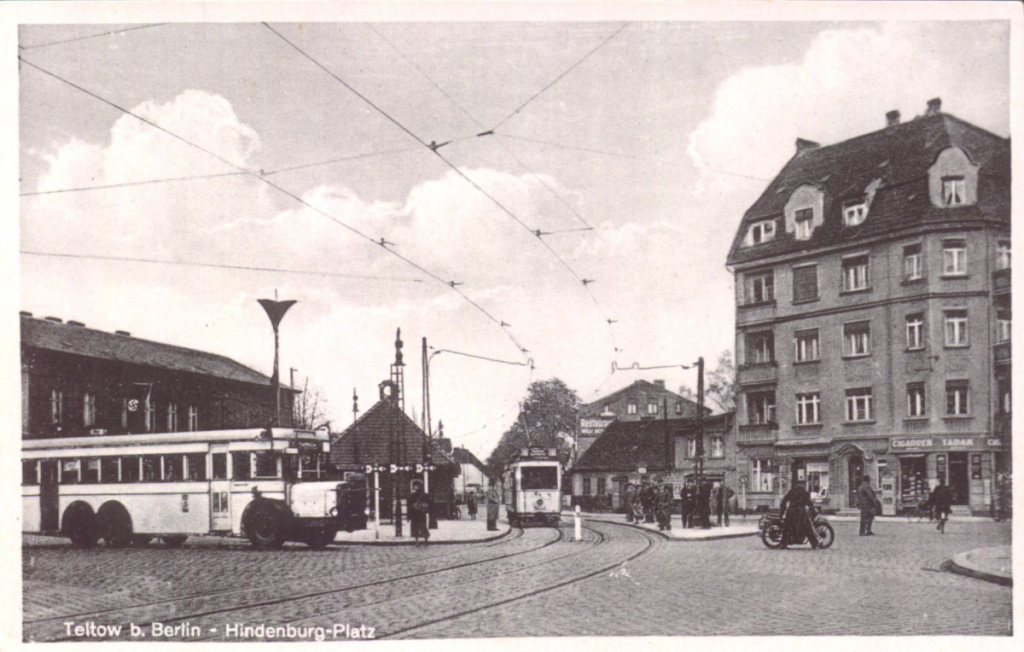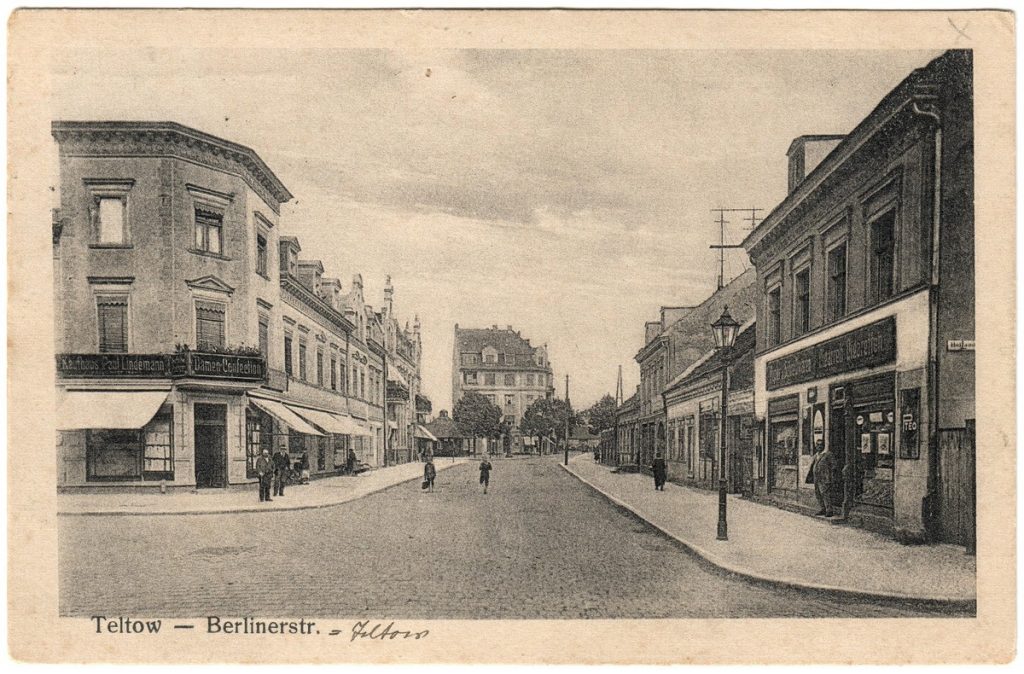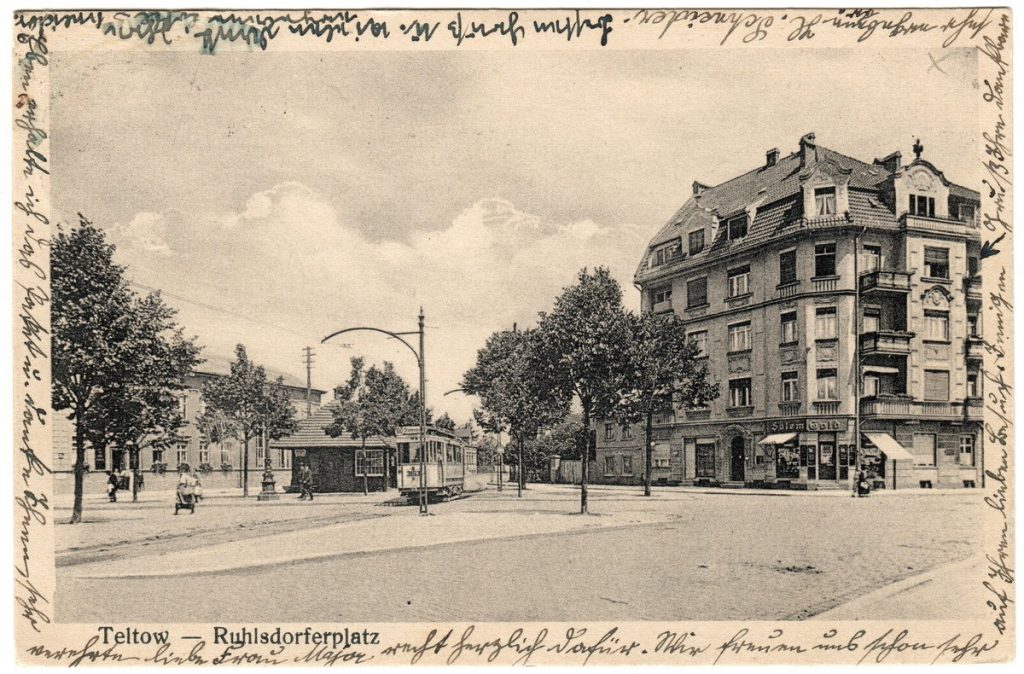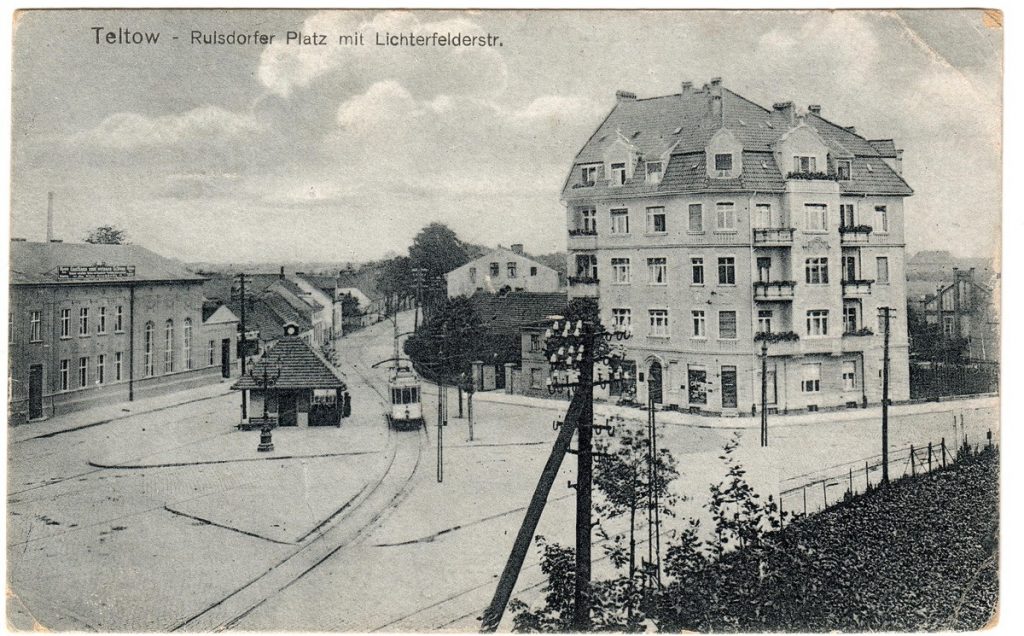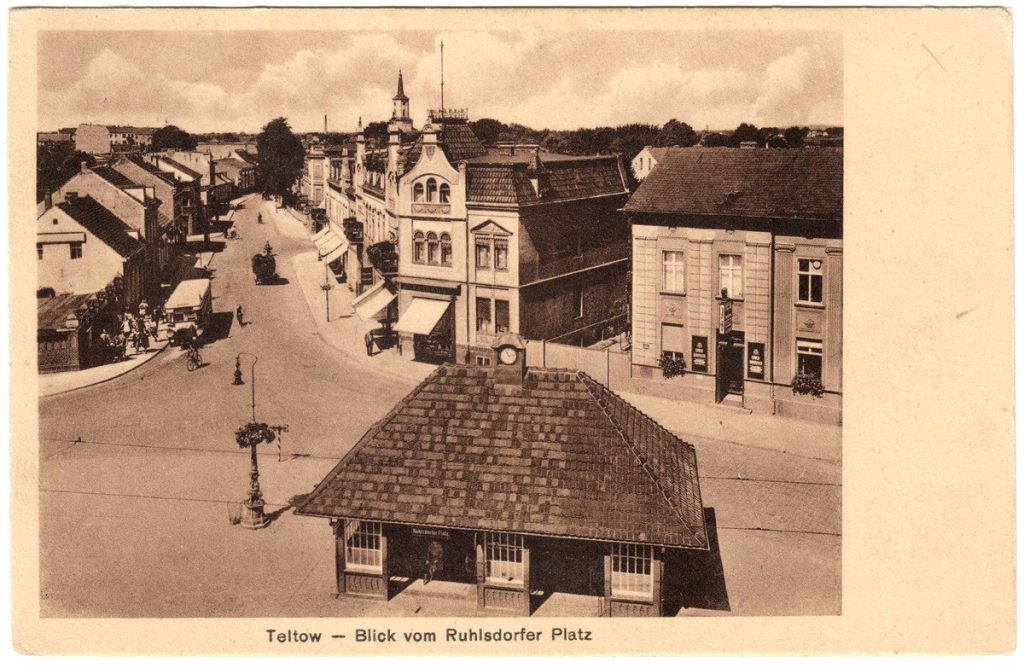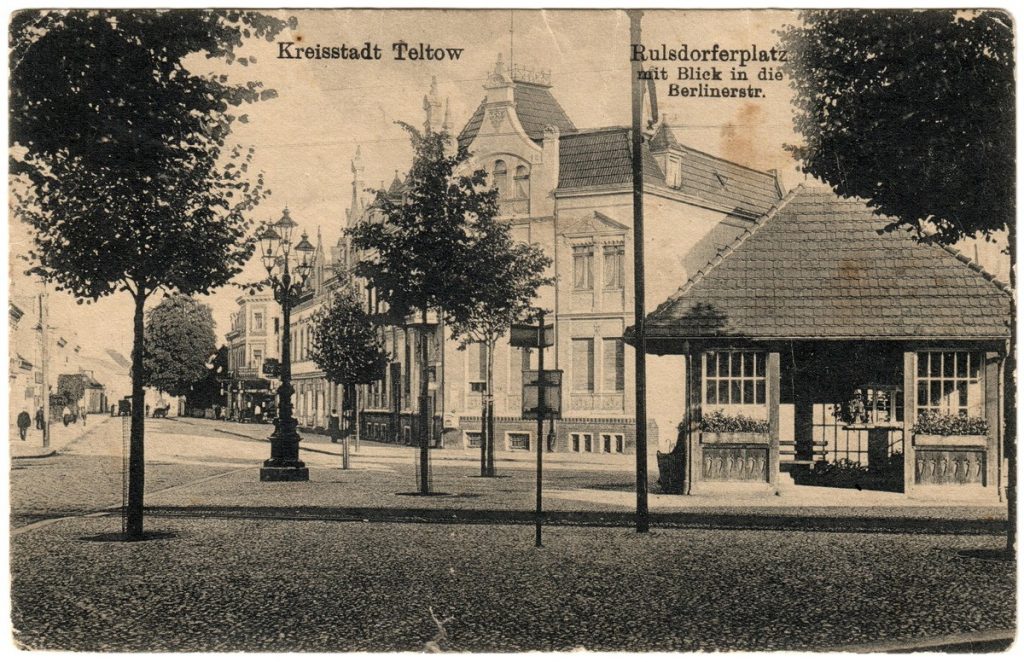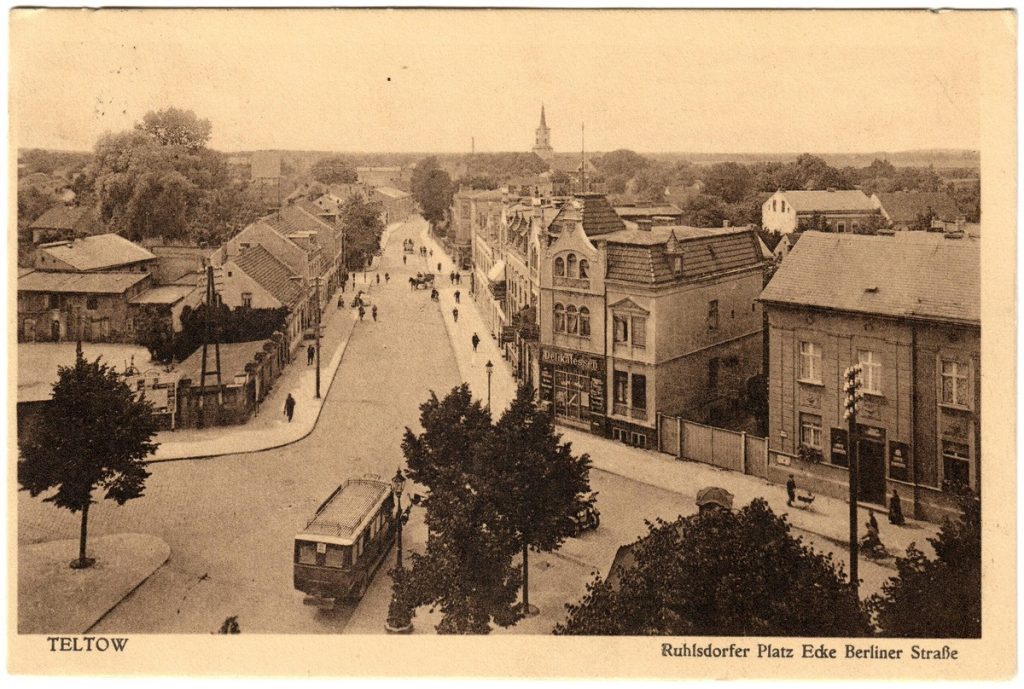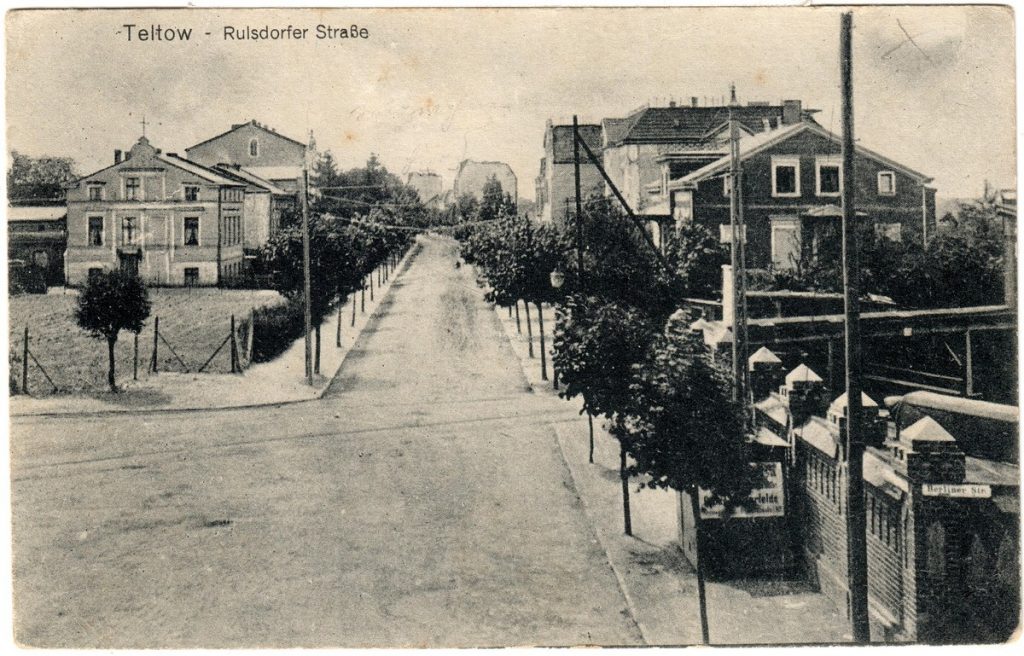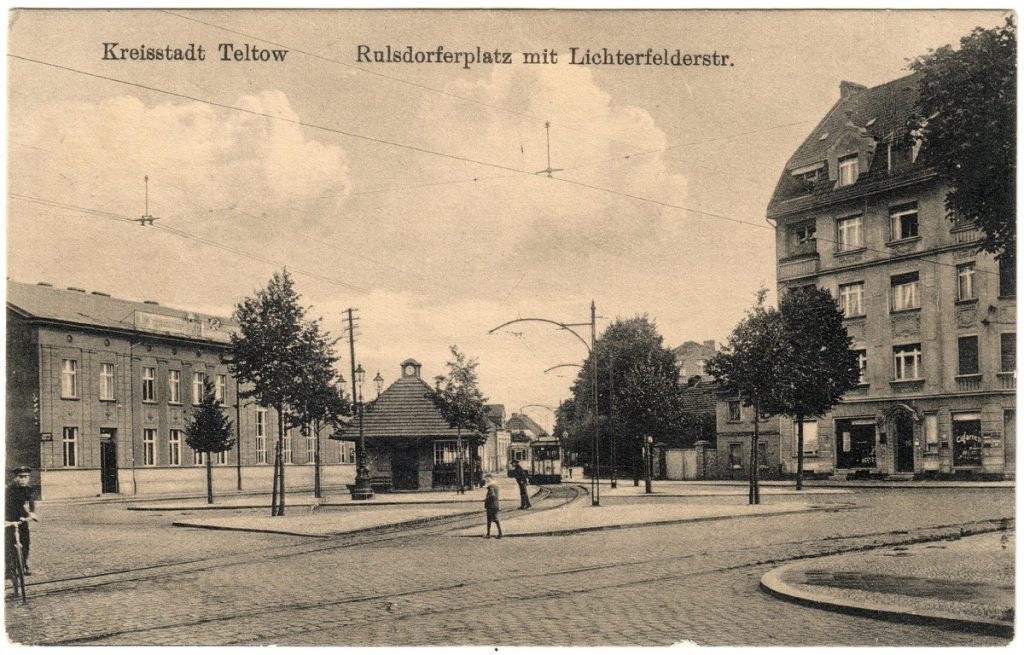Ruhlsdorfer Platz has long been an important crossroads since the town of Teltow was founded. Coming from the south from Ruhlsdorf, the country road turned northeast in a large curve toward Giesensdorf and on to Berlin. There crossed the road leaving Teltow, that led east to Osdorf, Heinersdorf or Großbeeren, today called Mahlower Straße. In the opposite direction it leads to Potsdam. Even earlier, when the town Teltow did not exist yet, the grounds of the Ruhlsdorfer Platz lay in the middle of a marshland, which could be passed just at this point – that is: traversed.
For centuries, the remains of this original wetland were a watering place for cattle in the form of two ponds. They were still in use until about 1880, before they were filled up. The two water holes were located to the right and left of the building at Ruhlsdorfer Platz 1.
When the town was founded, the so-called Berliner Tor (Berlin gate) was built near the crossroads, only about 100 steps away in today’s Berliner Straße. There, a bridge led into the town.
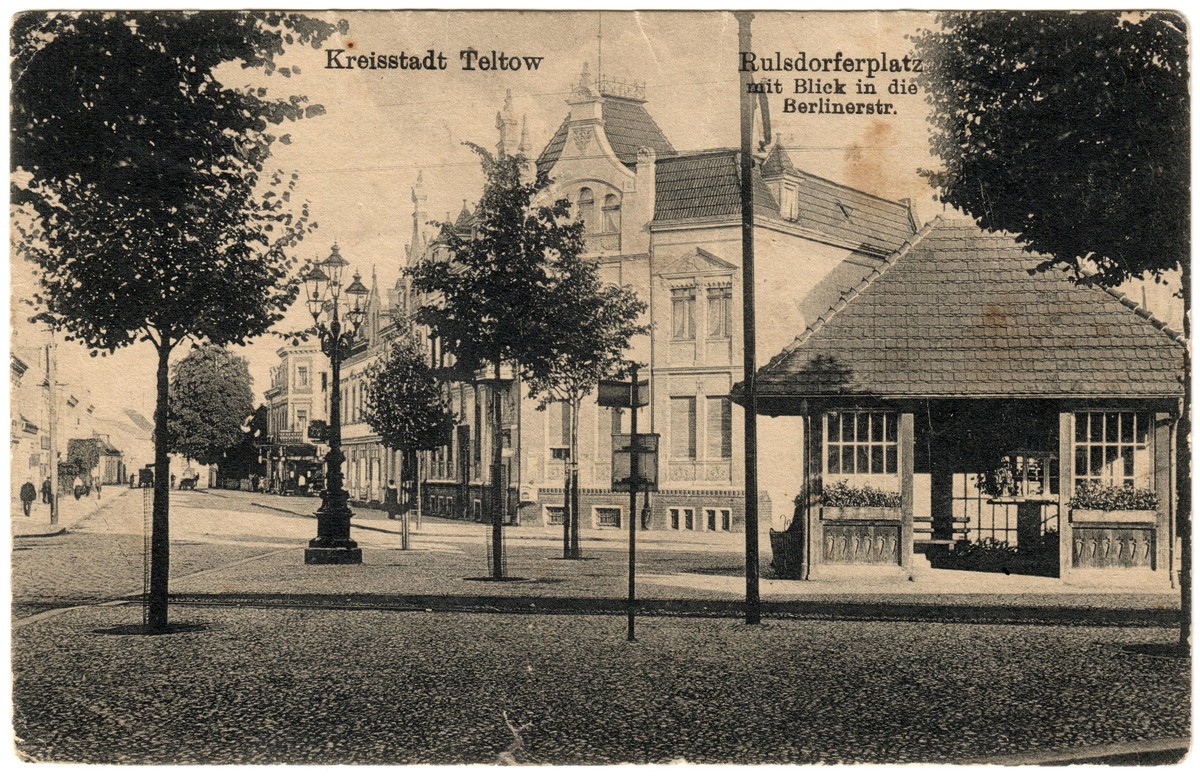
Around 500 years later, around 1700, the so-called Teltower Vorstadt (part of Teltow outside the old town) was built at Ruhlsdorfer Platz. First an inn with a guesthouse was established, called Zum weißen Schwan (White Swan). Then the millers of the noblemens’ mill and the council mill built their houses in the north-eastern arch of the square. Their two mills stood only 200 metres away on Mahlower Strasse. Another inn and a Büdnerhaus (small farmer’s house) followed and completed this Vorstadt.
The first tram ran in 1888 from Lichterfelde to Teltow and a few years later on to Stahnsdorf and the Kleinmachnower Schleuse (Kleinmachnow lock). Ruhlsdorfer Platz, at first the turning point of the tram, but above all a stop, was equipped with a nice shelter and the square got its name and its purpose as a traffic junction. At the turn to the 20th century, all around multi-storey houses and other representative buildings such as the Lindemann department store or the inn with a hall Zum Weißen Schwan were built. The square acquired an impressive backdrop, which, however, was largely destroyed again in World War II by the ravages of war.
Nevertheless, the square is and remains the entrance to the old town and the view with the St. Andreaskirche in the background invites you to visit the pretty farmer burgher houses (Ackerbürgerhäuser) and the old streets and alleys.

